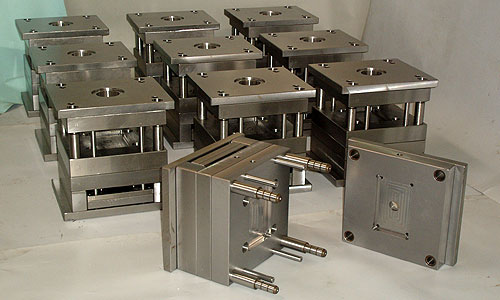Thermal Properties of Copper Bars Explained
Introduction to Copper
Copper is one of the most commonly used metals in various industries, particularly due to its excellent thermal and electrical conductivity. Known for its lustrous appearance and reddish-brown color, copper plays a vital role in applications ranging from electrical wiring to plumbing and beyond. Understanding the thermal properties of copper bars is essential for optimizing their use in industrial and commercial applications, especially in countries like Saudi Arabia, where temperatures can reach extreme highs.
Importance of Thermal Properties
Thermal properties of materials refer to their behavior under the influence of heat. For copper bars, these properties are critical because they dictate how effectively the metal can conduct heat, resist thermal expansion, and withstand extreme temperatures. These factors are especially important in applications like heat exchangers, radiators, and electrical components, where thermal management is crucial for performance and safety.
Key Thermal Properties of Copper
Copper exhibits several key thermal properties that make it an ideal choice for many applications:
- Thermal Conductivity: Copper is renowned for its high thermal conductivity, approximately 401 W/m·K, making it one of the best conductive metals available. This property allows for efficient heat transfer in numerous applications.
- Thermal Expansion: All materials expand when heated, and copper is no exception. Its coefficient of thermal expansion is about 16.5 x 10-6 /°C, which means it expands and contracts predictably when exposed to temperature changes.
- Specific Heat Capacity: Copper has a specific heat capacity of about 385 J/kg·K, meaning that it can absorb a significant amount of heat before its temperature rises appreciably.
Thermal Conductivity Explained
The exceptional thermal conductivity of copper is fundamental to its applications. This high level of conductivity allows copper bars to quickly transfer heat from one end to another, making them perfect for heat exchangers and cooling systems. In contrast to other metals like aluminum or steel, copper can effectively manage high-temperature environments, which is particularly beneficial in desert climates such as Saudi Arabia's. This capability ensures that machines and systems run efficiently without overheating, prolonging their lifespan.
Thermal Expansion Characteristics
When exposed to heat, copper expands, which can pose challenges in design and construction. However, knowing the thermal expansion rate allows engineers to design components that accommodate this expansion without causing damage or failure. For instance, in piping and tubing applications, joints must be designed to allow for movement due to thermal expansion, avoiding stress points that could lead to leaks or ruptures. Consideration for thermal expansion is particularly important in regions with significant temperature fluctuations.
Specific Heat Capacity and Its Relevance
The specific heat capacity of copper indicates its ability to store heat energy. A higher specific heat means that a material can absorb more heat without experiencing a large change in temperature. This property of copper is advantageous in applications where heat sinks are required to manage temperature, as they can take in excess heat and release it gradually, maintaining operational stability.
Practical Applications of Copper Bars
Given its thermal properties, copper bars find applications across various sectors:
- Electrical Applications: Copper is a preferred material for electrical conductors as it allows electricity to flow with minimal heat generation.
- Heat Exchangers: In industries like HVAC and refrigeration, copper bars serve as essential components in heat exchangers, facilitating efficient thermal transfer.
- Construction and Plumbing: Copper is often used in plumbing systems for its durability and resistance to corrosion, coupled with its ability to handle high temperatures.
Comparative Analysis with Other Metals
When evaluating copper's thermal properties, it's useful to compare them with those of other metals like aluminum, steel, and brass:
| Property | Copper | Aluminum | Steel |
|---|---|---|---|
| Thermal Conductivity (W/m·K) | 401 | 237 | 50-60 |
| Coefficient of Thermal Expansion (10-6 /°C) | 16.5 | 23 | 11-12 |
| Specific Heat Capacity (J/kg·K) | 385 | 897 | 490 |
This comparison highlights copper's high thermal conductivity and relatively low thermal expansion coefficient, making it a superior choice for many thermal management applications.
Challenges and Limitations
Despite its many advantages, copper does face some challenges:
- Cost: Copper is more expensive than many other metals, which can be a limiting factor in large-scale applications.
- Corrosion: While copper is generally resistant to corrosion, certain environments and conditions can lead to degradation over time, necessitating protective measures.
Conclusion
Understanding the thermal properties of copper bars is crucial for industries that rely on effective heat management. Its exceptional thermal conductivity, predictable thermal expansion, and significant heat capacity support its widespread use from electrical wiring to heating systems. As Saudi Arabia continues to develop its industrial capabilities, the role of copper and its thermal advantages will remain significant, ensuring efficient and reliable operations across various sectors.
Future Trends in Copper Applications
As technology advances, new applications for copper's thermal properties are emerging. Research into improving its alloys and optimizing its use in renewable energy systems, such as solar panels and electric vehicles, aims to maximize efficiency and sustainability. With the increasing emphasis on energy conservation and efficiency, copper's role in future applications is poised to expand even further.
References and Further Reading
For those interested in diving deeper into the thermal properties of copper, the following resources provide comprehensive insights:
- American Society for Metals, ASM Handbook
- “Thermal Properties of Metals” – Metals Handbook
- “Heat Transfer in Metals” – Journal of Thermal Science and Engineering Applications

